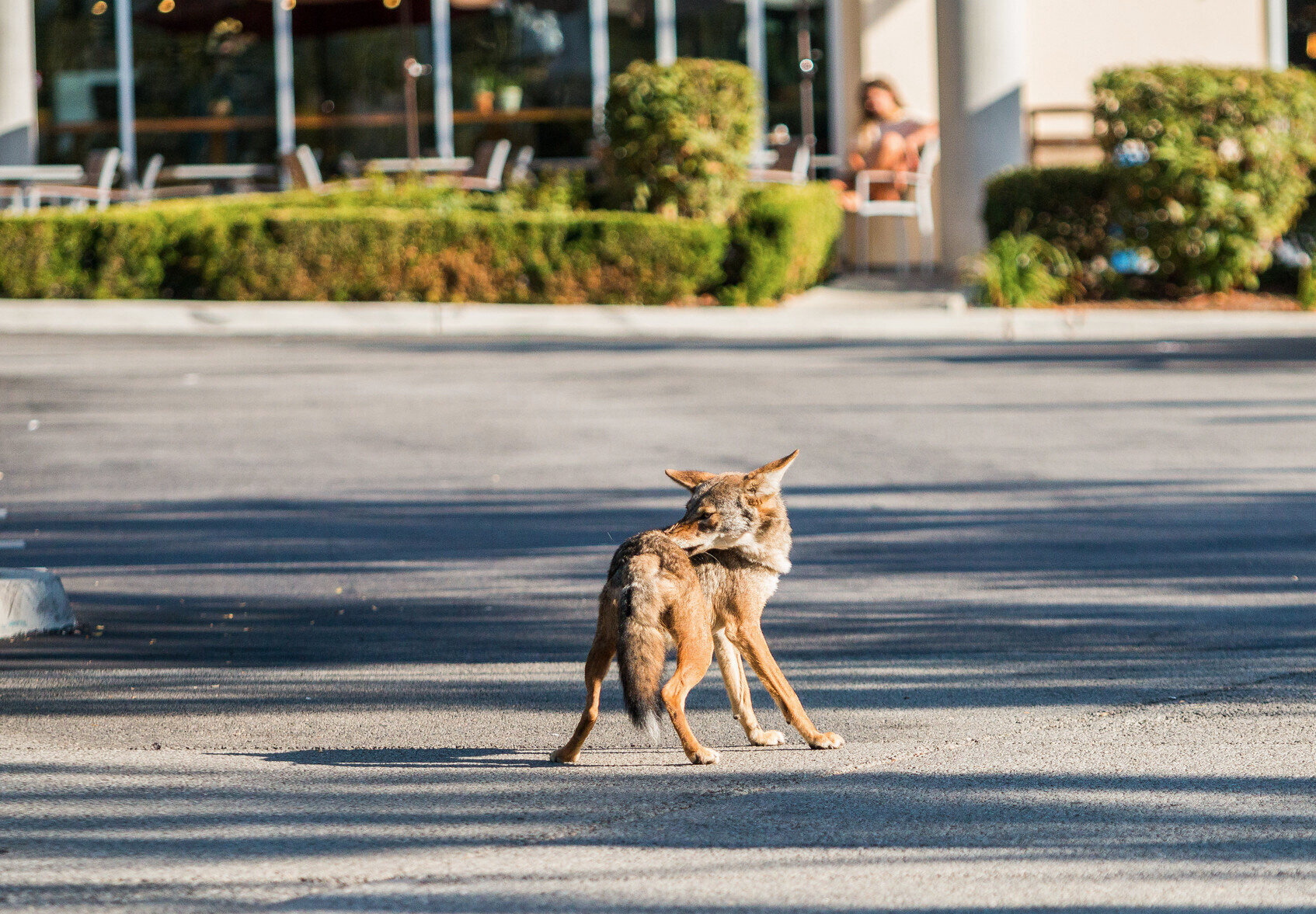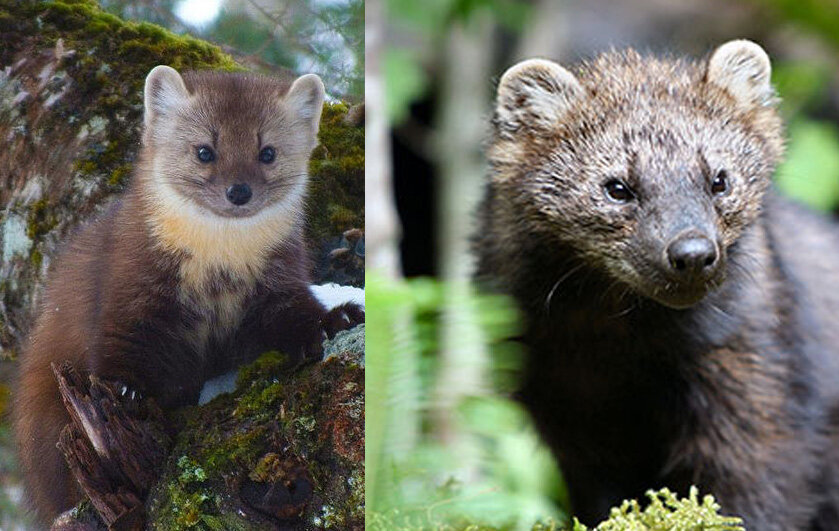New Hampshire is fortunate to have a group of sportsmen and women who are passionate about wildlife, conservation and their sport like no other group I have known in three decades as a wildlife biologist in the Granite State. They are this state’s trappers.
I have been fortunately lucky enough to work with them most of my career at the NH Fish and Game Department. I was the Department’s furbearer biologist since the early 1980’s, but the trapper’s history of helping the department and citizens goes way back before that. Trappers are truly an asset to this state and are frequently overlooked in recognition of contributions they have made, and continue to make, for conservation.
Let’s go back four decades to 1968, when New Hampshire’s trappers live captured 25 fisher, which were traded by the NH Fish and Game Department for 25 wild turkeys from West Virginia. This was this state’s first effort at restoring a wild turkey population. Fisher had been wiped out of West Virginia by the mid 1800’s by loss of habitat and unregulated hunting. West Virginia wanted to restore the balance of nature and return this mystical animal.
Fisher were nearly eradicated in New Hampshire as well, but a small remnant population was protected in 1931. By the 1960’s the fisher population had rebounded in New Hampshire and a limited season was again opened. Although New Hampshire experienced one of the worst record snows that year, which seemed to have doomed the newly transplanted turkeys, the fisher have thrived in West Virginia and have even expanded into some of the surrounding states since the reintroduction.
Leap forward a couple of decades to the early 1990’s. This time it was the state of Connecticut which wished to restore a fisher population. Trappers in NH again stepped up to the task of catching live fisher, resulting in several dozen shipped to Connecticut over a two-year period. By this time I was in the middle of things, racing around to collect live fisher from trappers, then sending them down to Connecticut in quick order to reduce stress on the animals. Fisher took to liking that state too.
Pennsylvania Restorations
NH Trappers were also instrumental in catching a few river otters in the mid 1990’s to send to Pennsylvania to help with a restoration already underway there. Here again I became “Otter Central”. I ended up keeping an otter in the cleaned out grease pit in my garage for several weeks.
By 1996 Pennsylvania was launching their own fisher restoration project and turned to New Hampshire for their supply of live fisher. You see, NH trappers had developed a reputation for catching healthy live fisher. I warned Pennsylvania’s biologist “Build lots of cages and fisher will come.” But he didn’t listen. He figured maybe two or three dozen fisher could be caught in the month-long NH fisher trapping season.
Suddenly, thanks to our NH trappers, I was “fisher Central” yet again, only this time I was meeting trappers and collecting five or ten a day!
I had heaps of fisher at my house. I would spend the day collecting fisher, and the evenings securing them into heavy plastic cylinders with thick doors bolted on each end. I delivered them the next morning to the Manchester Airport by 4:30 am; and by noon they were delivered to Penn State.
By now I literally had “stacks-of-fisher”. Pennsylvania officals had NOT built enough cages at Penn State. I ended up borrowing a number of large cages from The University of New Hampshire and had them stacked in my neighbor’s barn - full of fisher! My good friend Rick Hamlett had a barn full of fisher for a couple of months. Yes, we got fisher in NH.
This project continued for two more years, with NH trappers sending 175 fisher in all. This greatly exceeded any and all expectations from the folks in Pennsylvania, but ensured a successful restoration over a much larger area than had been originally thought possible.
Other Contributions
Restoring wildlife populations in several other states is just a small fraction of what trappers have contributed to conservation and to what they continually contribute to communities all across the state. Although trapper numbers have dwindled from nearly a thousand in the 1970’s to less than half of that the last decade, this core group of passionate wildlife conservationists make a difference nearly every day somewhere in this state.
Do you enjoy snowmobiling, cross country skiing, horseback riding or other outdoor activities on New Hampshire trail systems? Thank a NH trapper. Trappers help manage beaver conflicts that would flood or destroy the some of hundreds of miles of trails maintained by the Trails Bureau. From unclogging culverts to trapping beavers to control populations, trappers are continuously helping to keep the trails open.
And not just trails, many town road agents depend on local trappers to keep the roads high and dry too. I have known many trappers who spend many summer and early fall evenings unplugging road culverts, then go in to set beaver traps when the pelts are prime in November. Trappers annually provide hundreds and hundreds of hours to communities and citizens to reduce beaver conflicts.
New Hampshire trappers have always striven to improve their craft and skills. Trapper and trapping techniques are constantly being improved. Yes, you can build a better “mouse trap” or in this case a fox, fisher or beaver trap. Existing equipment is constantly being improved. Traps and trapping have changed significantly since I have been observing the activity. Off-set and laminated jaws have been developed for foot-hold traps in recent years. More swivels have been added to the chains as well as repositioning the chain to reduce injury to an animal in a foot-hold trap. More powerful body gripping traps ensure a quicker and more humane dispatch to a muskrat or mink.
Looking To The Future
Trapper education is a constant. Each year at the NH Trappers Association Fall Rendezvous trappers are provided numerous workshops to improve their skills. And more trap and trapping improvements are always in the works.
New Hampshire trappers have been conducting trap testing for the Association of Fish and Wildlife Agencies to develop Best Management Practices for trapping. This national effort seeks to develop guidelines for trappers to use the most humane, safe and practical trapping methods for over a dozen species in the US. As a result, New Hampshire trappers will make a significant impact on how beavers are trapped all across this country.
(Photo | National Parks Service)
Trappers are probably one of the most heavily regulated groups. Trappers have self-imposed many restrictions to make sure trapping is the most humane, ethical and safe activity that it can be. It was the trappers, through the voice of the NH Trappers Association, who requested mandatory trapper education as a prerequisite BEFORE anyone could trap. Trappers supported the required land owner written permission document before any traps are to be set on land. In fact, trappers must file a copy of the trapper permission form with their local conservation officer before traps are placed. Consequently trapping only takes place where a land owner wants it, and under the watchful eyes of the local conservation authority.
And to top it off, all licensed trappers must provide an annual report to Fish and Game biologists listing not only the species by town of what they have trapped, but also the number of traps and the number of nights traps were set for each species - a concept known as Catch Per Unit Effort (CPUE).
From my perspective, New Hampshire is the envy of many other states and provinces because of the data they provide on furbearers annually; and trappers have willingly provided this important information for decades. Trappers truly are a remarkable lot.
Eric Orff is a certified wildlife biologist and was a wildlife biologist with the New Hampshire Fish and Game Department from 1976 to his retirement in June of 2007. You can learn more about Eric via his personal website: NH Fish & Wildlife, where he maintains his wildlife reports and his own nature musings via his “Nature Notes” segments. Eric also now maintains his collection of notes in video shorts via his YouTube channel, which he updates regularly.
His most recent video features commentary on regulated trapping and even more contributions trappers have given to the conservation community over the years.











Meandering through the notches and scenic byways in the shadow of the White Mountains gives one time to reflect, ponder, and envision what life would be like in such a remote area. Its hard to imagine that the once pristine and vast wilderness of the Whites (now heavily laden with tourists and recreationalists of all stripes) was once home to many a die-hard yankee - living off the land and its self-reliant spoils.